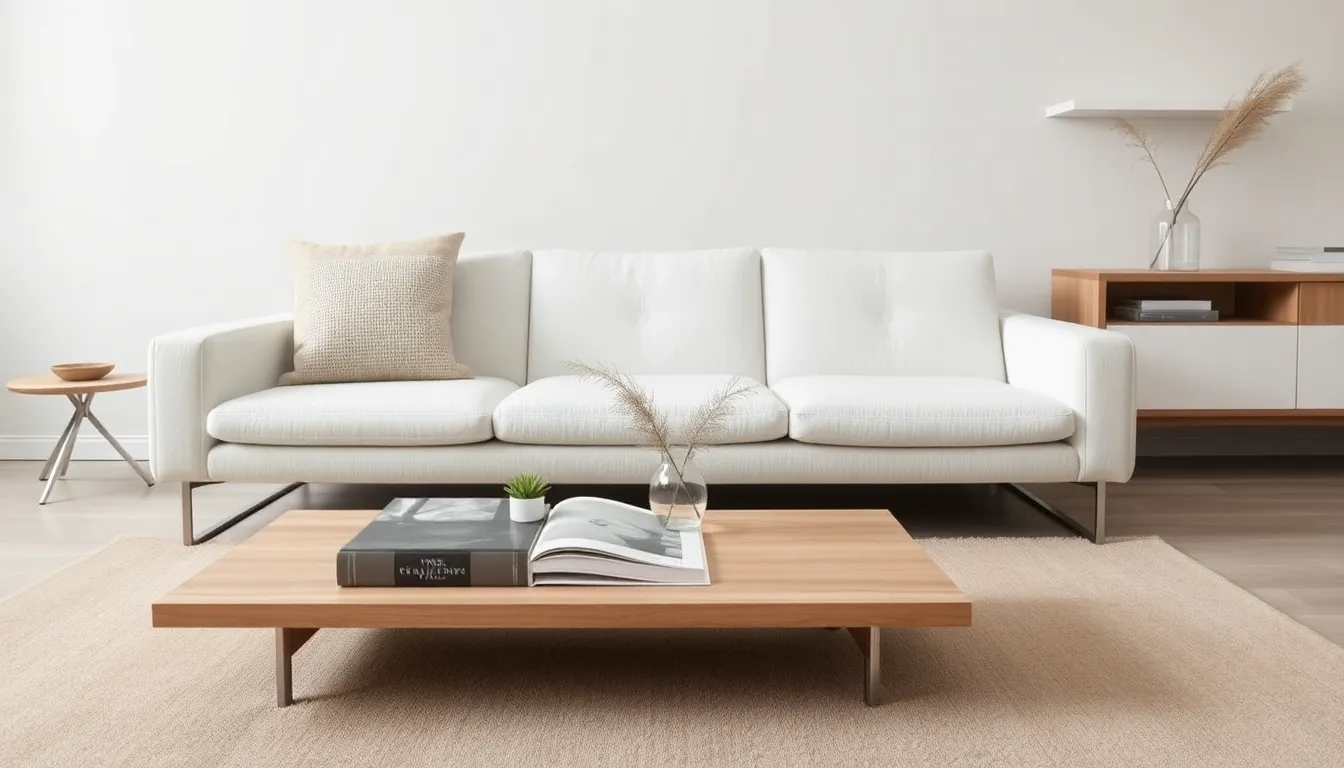Welcome to the transformative world of minimalist living room design, where simplicity meets functionality in the most elegant way. Whether you’re taking your first steps into the realm of home decorating or you’re a seasoned enthusiast, the minimalist approach offers a refreshing canvas that speaks volumes through subtlety and restraint. Here, the art of “less is more” is not just a practice but a lifestyle choice that invites calm, serenity, and a deep appreciation for the essentials.
In this article, we will explore seven brilliant minimalist living room designs that promise to inspire and invigorate your creative spirit. Each design showcases how a thoughtfully curated space can elevate your home environment, enhancing both its aesthetic appeal and its livability. By diving into these designs, you will uncover practical tips and insightful strategies on how to maximize your living room’s potential without overwhelming the senses.
Minimalism isn’t merely about removing clutter; it’s about creating a sanctuary that reflects your personal style while embracing simplicity. As you journey through these designs, you’ll discover how to skillfully balance form and function, blending textures and tones to create a harmonious living space. From selecting the perfect furniture pieces to choosing a soothing color palette, this guide equips you with the knowledge to transform your living room into a peaceful retreat that is both inviting and uniquely yours.
Curating a Neutral Color Palette
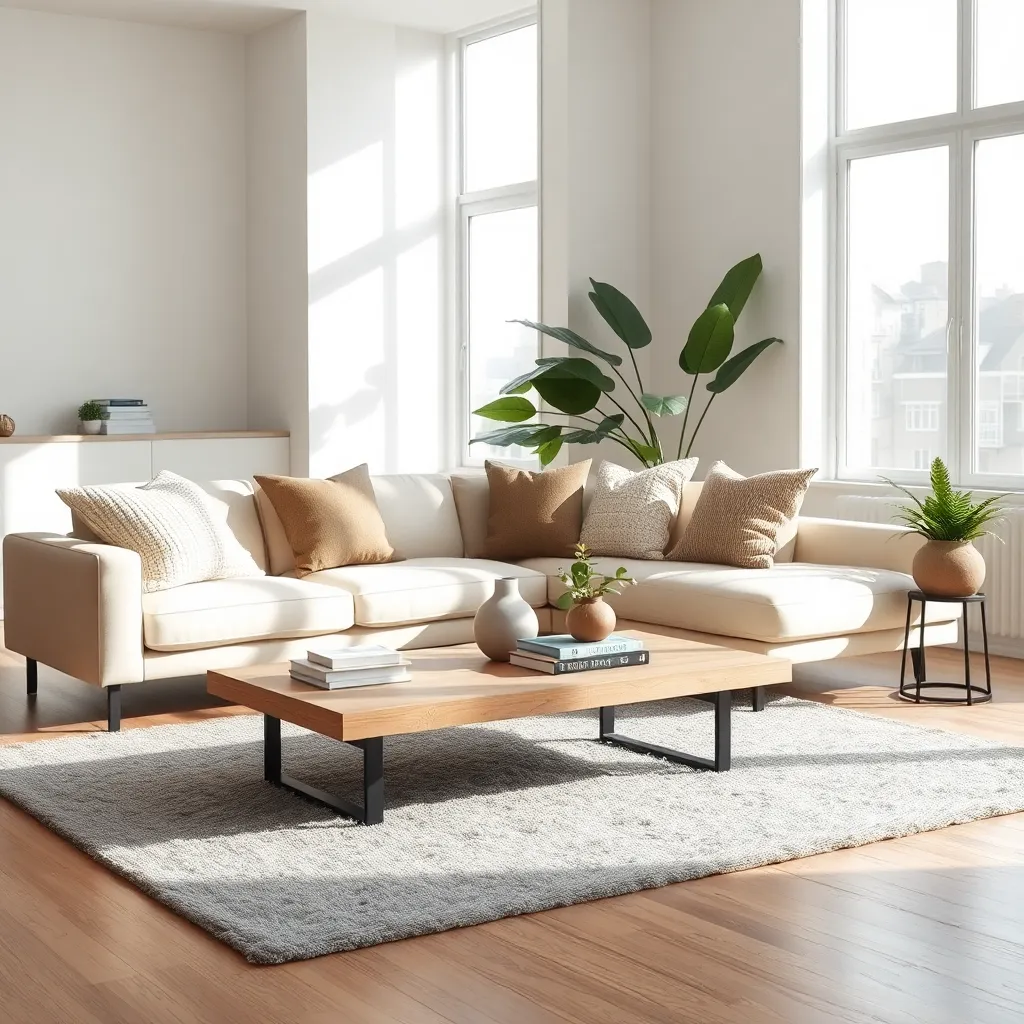
Curating a neutral color palette requires a keen eye for subtlety and balance. Begin with a foundation of soft whites, beiges, or greys to create a serene and adaptable backdrop for your minimalist living room.
When selecting furniture, opt for pieces in natural materials like linen, cotton, and wood to enhance the neutral theme. Choose a couch in a light grey fabric and accent it with textured pillows in cream or sandy hues for added depth.
Incorporating layers is key to avoiding monotony in a neutral palette. Use a mix of materials like a woolen throw, a jute rug, or a leather pouf to introduce tactile variety and visual interest without breaking the minimalistic essence.
For advanced decorators, consider adding a subtle pop of color through artwork or a statement plant. A piece of abstract art with muted tones or a lush green fiddle leaf fig can serve as focal points that enrich the space while maintaining the overall calm atmosphere.
Embracing Open Space Concepts
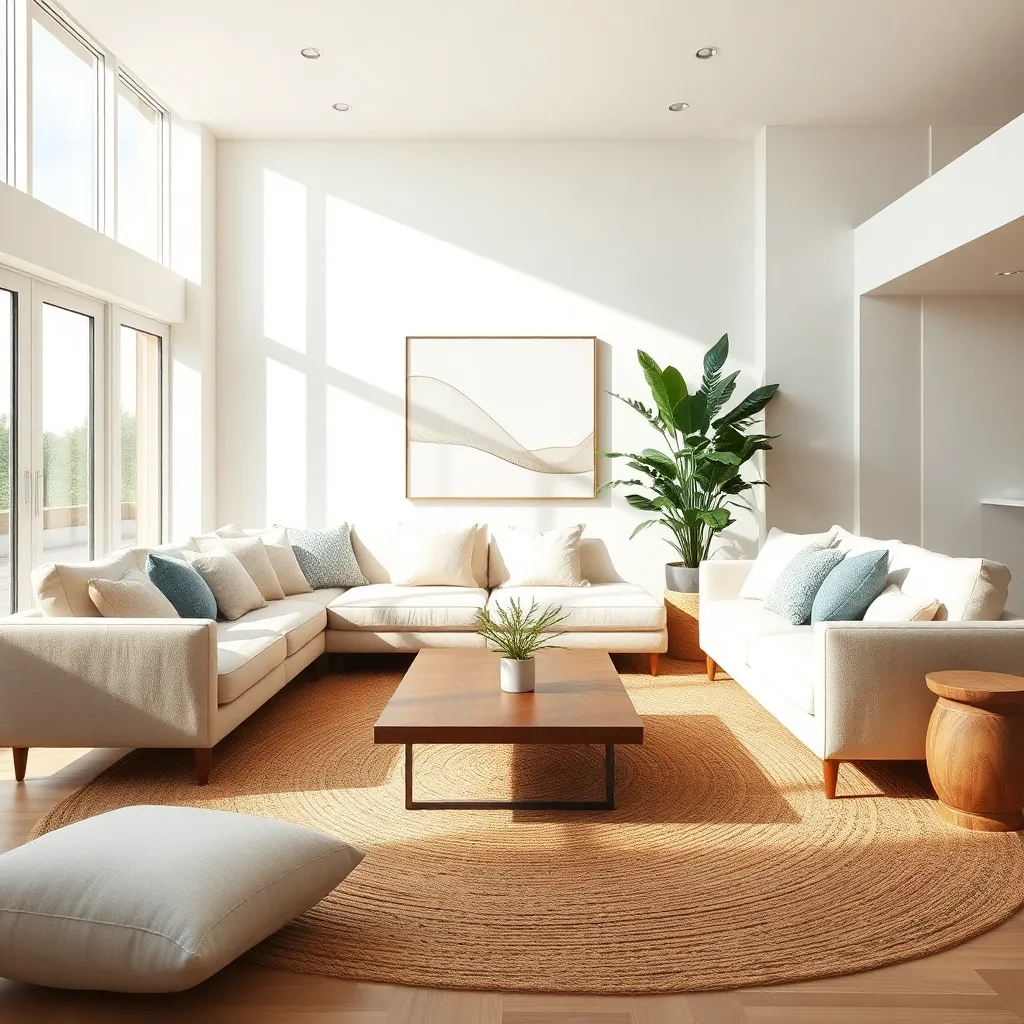
Embracing an open space concept can transform your living room into a serene and airy sanctuary. Begin by removing unnecessary partitions, allowing for a seamless flow between areas, which promotes a sense of freedom and spaciousness.
One practical approach is to use furniture as a natural divider that maintains openness while defining zones. For instance, a sleek, low-profile sofa can subtly separate the living area from the dining space without closing off the room.
Incorporating multifunctional furniture pieces is a smart way to maximize the potential of an open space. Consider a stylish console table behind the sofa that doubles as a work desk or a dining table that extends to accommodate guests.
For color schemes, opt for a cohesive palette that ties the open space together. Use light, neutral tones across walls and large furniture items to create continuity, while adding pops of color through accessories like cushions or artwork for visual interest.
Choosing Functional Furniture Pieces
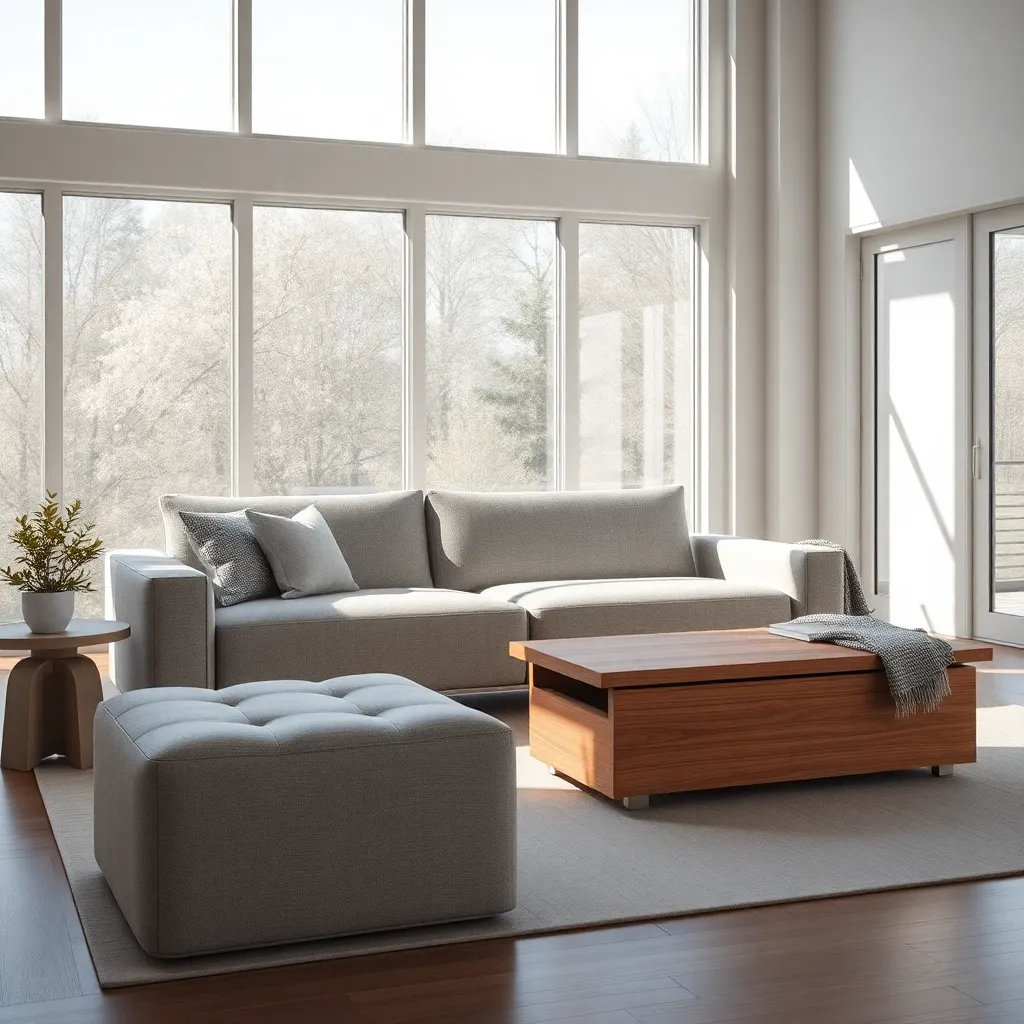
When choosing functional furniture pieces for a minimalist living room, prioritize items that serve multiple purposes. For example, an ottoman with hidden storage can act as a coffee table, extra seating, and a place to tuck away blankets or magazines.
Consider materials that enhance the minimalist aesthetic while offering durability. Opt for simple, clean lines in neutral tones such as white, grey, or beige, which can be paired with natural wood or metal for a sleek look.
Invest in a sofa that fits the scale of your room without overwhelming it. In smaller spaces, a sleek, low-profile sofa can create the illusion of more space and pairs well with other minimalist elements.
For those looking to add a touch of sophistication, incorporate furniture with subtle textures. A woven fabric or a leather chair can add depth to your room without deviating from the minimalist theme.
Placement is key to maintaining a functional and open layout. Arrange furniture to create clear pathways and encourage natural flow, ensuring no piece obstructs movement or visibility.
Incorporating Natural Light Elements
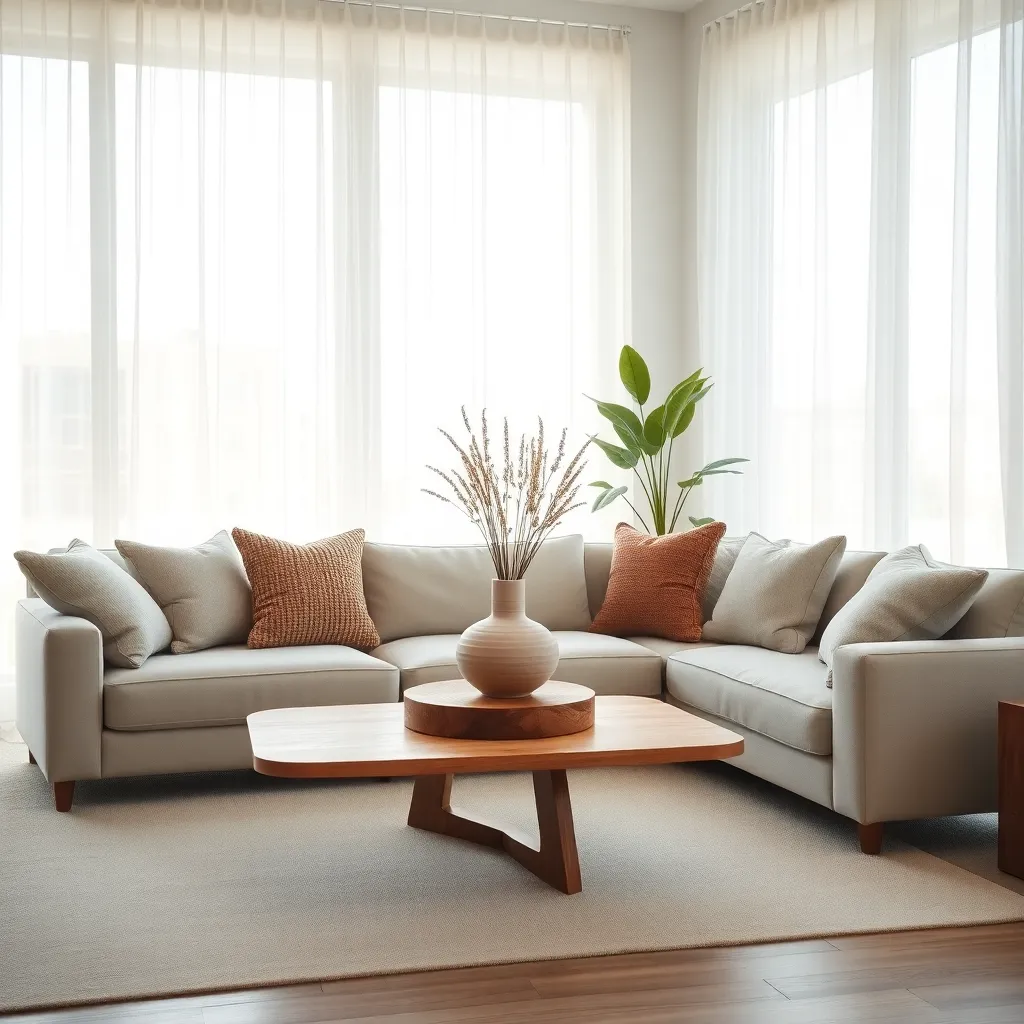
Incorporating natural light elements into your minimalist living room can dramatically enhance the space’s ambiance. Start by selecting sheer, lightweight curtains or blinds that allow ample sunlight to filter through while maintaining privacy.
Consider positioning mirrors strategically to reflect and amplify natural light throughout the room. Placing a large mirror opposite a window can double the amount of light entering the space, creating a brighter and more inviting atmosphere.
For a more advanced touch, opt for furniture and decor in lighter, neutral shades such as whites, beiges, or soft grays. These colors not only complement a minimalist aesthetic but also help bounce light around, making the room appear larger and more open.
An often-overlooked tip is to incorporate reflective surfaces, such as glass or metal accents, in your decor. These materials can subtly enhance the room’s brightness by redirecting natural light, adding a layer of dimensionality to your design.
Utilizing Simple, Clean Lines
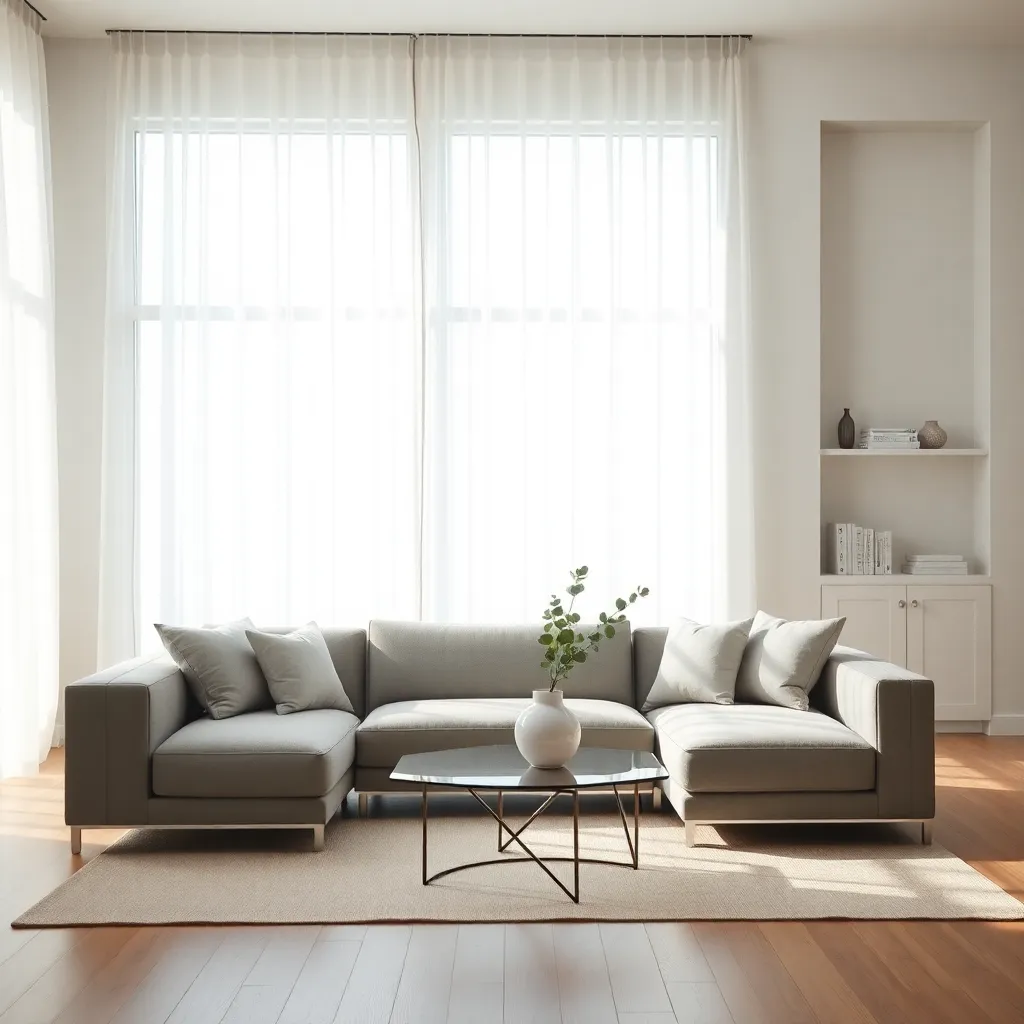
When embracing minimalist design, one of the most effective strategies is to focus on simple, clean lines. This approach not only creates a sense of order and spaciousness but also highlights other design elements like color and texture. For beginners, choosing furniture with sleek, streamlined shapes can help set a minimalist foundation. Look for sofas and chairs with straight edges and subtle curves, upholstered in solid, neutral tones like soft grays or whites.
Experienced decorators can take this a step further by experimenting with contrast and balance within their line choices. Pairing a low-profile modern coffee table with a taller, linear bookshelf can add visual interest without cluttering the space. It’s also effective to incorporate materials that enhance the linear aesthetic, such as metal or glass, which offer a reflective quality that complements the simplicity of the lines. A glass-topped table, for instance, can create an airy feel while maintaining clean, uninterrupted lines.
To ensure a cohesive look, prioritize consistency in line design across different elements of the room. Align furniture with architectural features, such as windows or doors, to create a harmonious flow. Additionally, consider installing shelving units that mimic the lines of your furniture, which can serve both storage and decorative purposes. By maintaining this consistency, you’ll create a space that feels both organized and inviting.
Advanced decorators might explore incorporating artwork that mirrors the room’s linear theme. Opt for pieces with geometric shapes or line drawings to reinforce the minimalist aesthetic. Additionally, remember that the layout of your furniture should emphasize openness, so leave ample space between pieces to allow the lines to breathe. This thoughtful arrangement will ensure that your living room remains a serene and uncluttered retreat.
Adding Subtle Decorative Accents
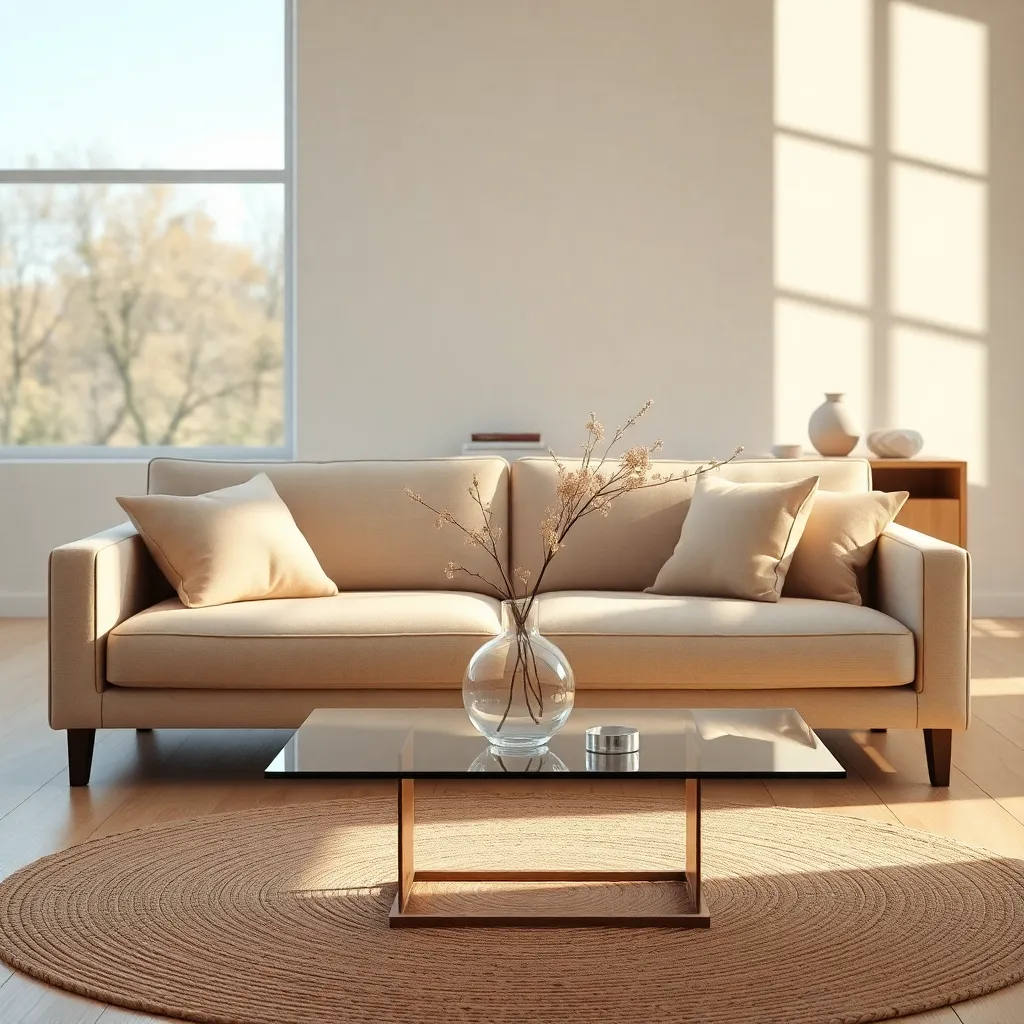
Incorporating subtle decorative accents can elevate a minimalist living room without overwhelming the space. Start by selecting a few key pieces that add texture and interest, such as a woven throw or a sleek metal vase.
Consider using neutral-colored textiles to add warmth and depth to your design. A soft, beige rug or a set of gray linen cushions can complement the clean lines of minimalist furniture while adding a cozy touch.
Artwork is another excellent way to introduce subtle accents in a minimalist space. Opt for pieces with simple geometric shapes or monochromatic palettes that blend seamlessly with the overall design.
For a more advanced approach, experiment with layering different materials to create visual interest. For instance, place a wooden tray atop a glass coffee table and add a small ceramic planter to complete the look.
Maximizing Storage with Minimalist Solutions
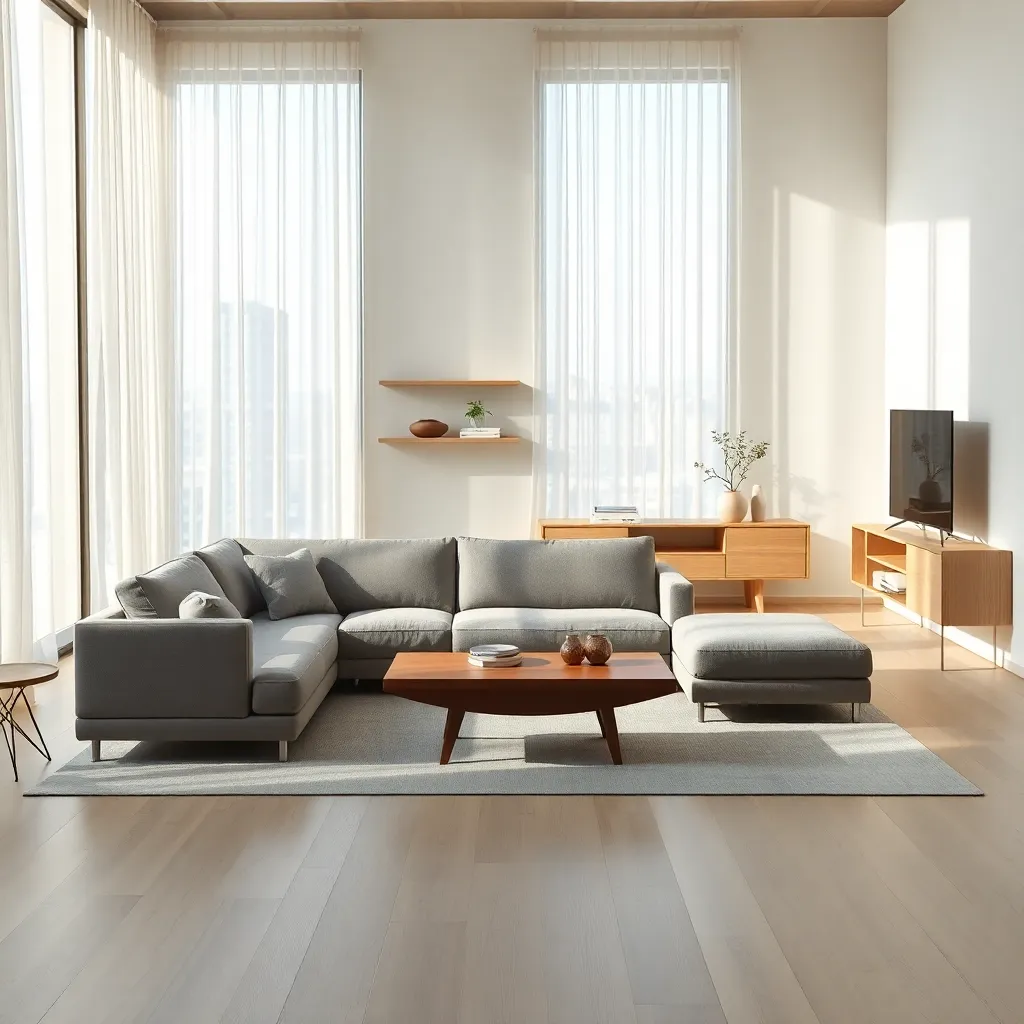
In a minimalist living room, maximizing storage is essential to maintain a clean and uncluttered look. Start by choosing furniture pieces that offer hidden storage, like a coffee table with a lift-top or a sofa with under-seat compartments, to keep everyday items out of sight.
Consider using vertical space by installing sleek shelving units that blend seamlessly with the wall color. This not only provides additional storage but also keeps the floor area open and airy, enhancing the minimalist aesthetic.
Color coordination plays a significant role in creating a cohesive minimalist space. Opt for a neutral color palette with soft whites, grays, or beiges to ensure that storage solutions do not overwhelm the room’s simplicity and elegance.
For those with a more advanced eye for design, integrating built-in storage can be a game-changer. Custom cabinetry painted to match the walls can create a seamless, integrated look while providing ample space for books, electronics, and other essentials.
Conclusion: Growing Success with These Plants
As we explored the ‘7 Brilliant Minimalist Living Room Designs,’ we discovered key relationship concepts that marry design with connection: simplicity fosters communication, open spaces encourage togetherness, natural elements bring tranquility, multifunctional areas promote flexibility, neutral palettes reduce stress, thoughtful layouts enhance interaction, and personal touches cultivate affection. These principles remind us that our living spaces can be a nurturing ground for stronger bonds.
Now, take immediate action by choosing one element to implement in your home today. Perhaps declutter a shared space to invite more openness or introduce a calming nature-inspired accent. These small changes can create a ripple effect, enhancing the quality of your interactions and deepening your connection.
Don’t let these inspiring ideas slip away—bookmark this article now to revisit these insights whenever you need a boost in your relationship journey. As you continue to infuse these minimalist design principles into your living environment, you’ll pave the way for lasting relationship success, cultivating a home where love and harmony flourish. Embrace these changes, and watch your relationships thrive in a space that truly reflects the tranquility and joy you deserve.

